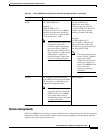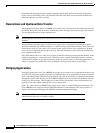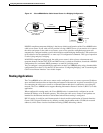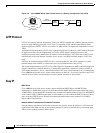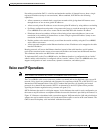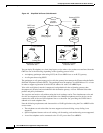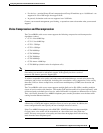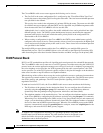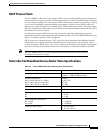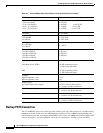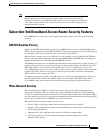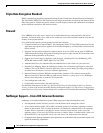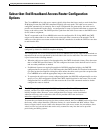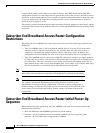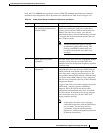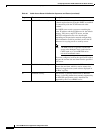
Configuring Subscriber-End Broadband Access Router Features
Voice over IP Operations
MC-621
Cisco IOS Multiservice Applications Configuration Guide
SGCP Protocol Stack
The Cisco uBR924 cable access router supports SGCP, an out-of-band signalling protocol that interacts
with an external call agent to provide call setup and teardown for VoIP calls made through the Internet
or a local intranet. Using the call control agent, SGCP communicates with the voice gateways, allowing
you to create a distributed system that enhances performance, reliability, and scalability while still
appearing as a single VoIP gateway to external clients. SGCP eliminates the need for a dial plan mapper
and static configuration on the router to map IP addresses to telephone numbers because this function is
provided by the external call agent.
In architectures using the SGCP protocol stack, the session application implements the gateway
functionality defined to support both trunk and residential gateways. The Cisco uBR924 functions in this
mode as a residential gateway with two endpoints.
SGCP can preserve signalling System 7 (SS7) style call control information and additional network
information such as routing information and authentication, authorization, and accounting (AAA)
security information. SGCP allows voice calls to originate and terminate on the Internet; it also allows
one end to terminate on the Internet and the other to terminate on a telephone or PBX on the PSTN.
Note The Cisco uBR924 cable access router supports both H.323 and SGCP call control, but only
one method can be active at a time.
Subscriber-End Broadband Access Router Voice Specifications
Table 39 Cisco uBR924 Cable Access Router Voice Specifications
Metric Value
Loss (between DCS and BTI gateway) Nominal: 4 dB ±0.5 dB (off hook)
Nominal: 9 dB ±0.5 dB (on hook)
Attenuation distortion:
DCS <> BTI (200 Hz to 3.5 kHz)
BTI<> DCS (304 Hz to 3004 Hz)
DCS -> BTI (204 Hz to 3004 Hz)
Nominal:
+1 dB/–3 dB
±0.5 dB
±0.5 dB0
Idle channel noise <= 18 dBmC (noise shall not exceed)
Signal to C-notched noise >= 35 dB
Intermodulation distortion:
R2
R3
>= 52 dB
>= 52 dB
Single frequency interference:
0 to 12 kHz
0 to 4 kHz
<= –28 dBmO
<= –40 dBmO
Frequency shift (offset) <= ±0.2 Hz (max)
<= ±0.1 Hz (99.5%)



